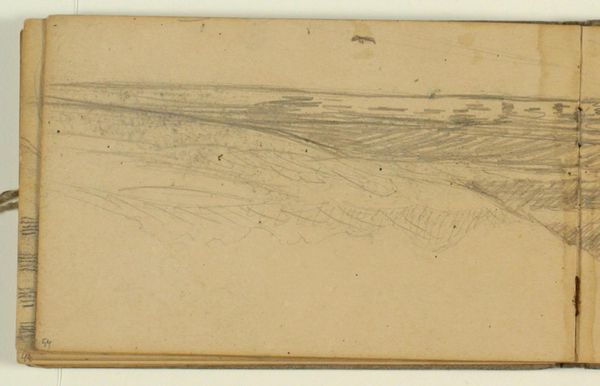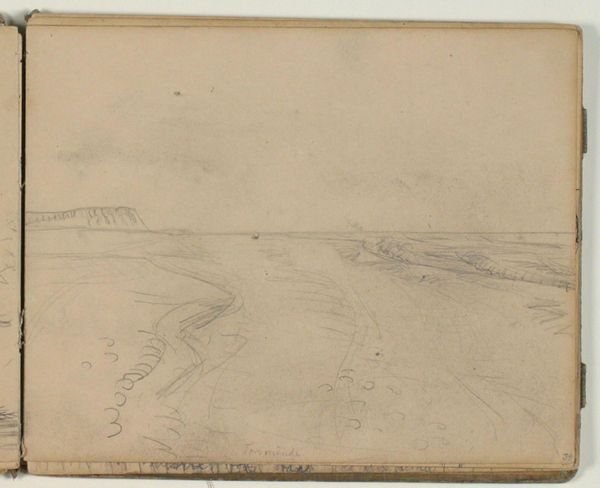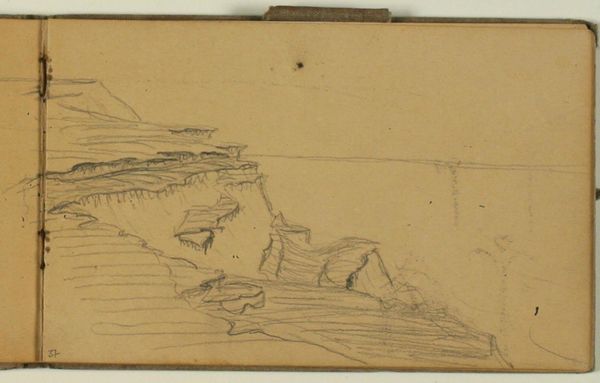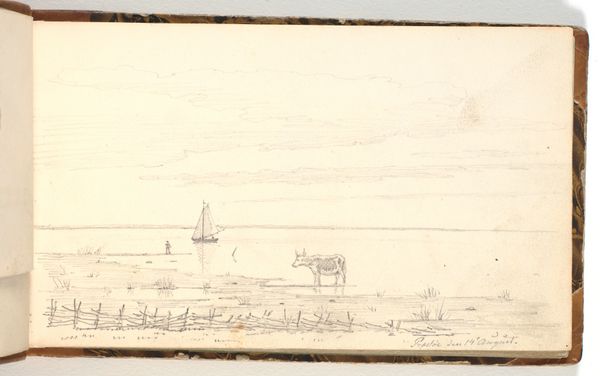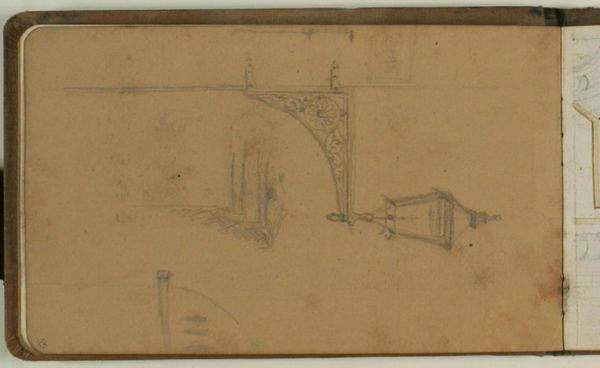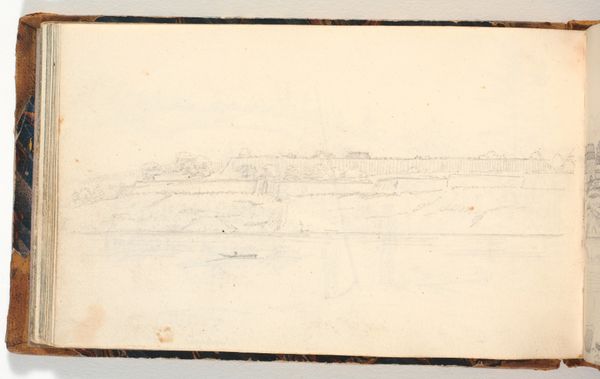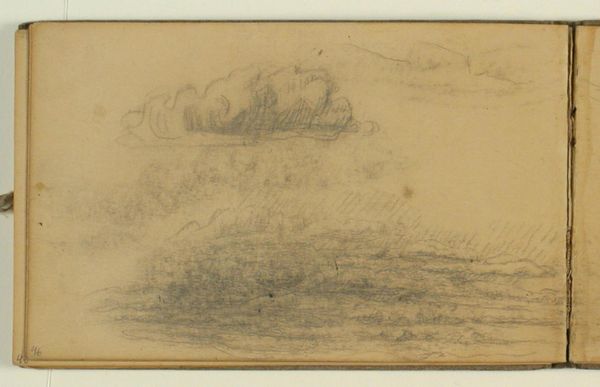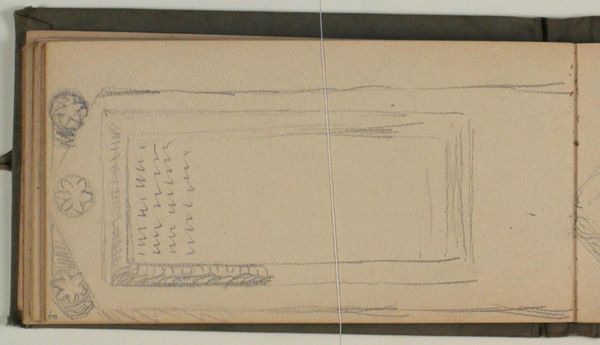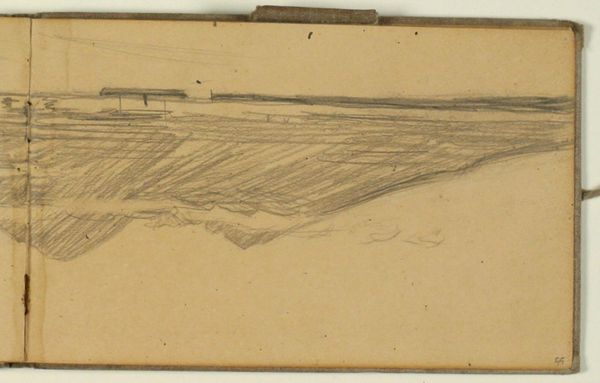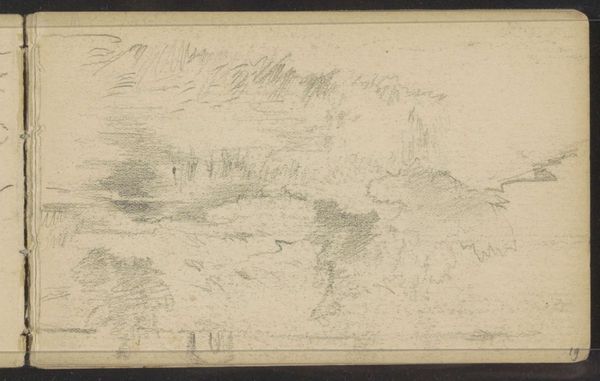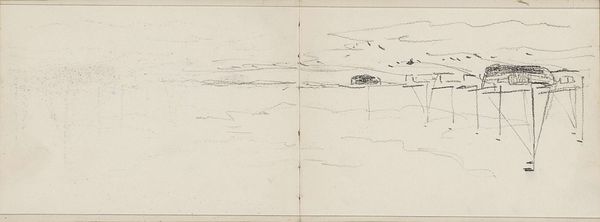
Dimensions: 114 mm (height) x 183 mm (width) x 9 mm (depth) (monteringsmaal), 113 mm (height) x 182 mm (width) (bladmaal)
Curator: This is "Havskitse. Herunder kompositionsudkast," or "Sea Sketch. Including composition draft," by Niels Larsen Stevns, likely created between 1900 and 1904. It's currently held at the SMK, the National Gallery of Denmark. Editor: My initial impression is one of immense calm, surprisingly so given it's just a simple pencil drawing. The subtle variations in tone really evoke the quiet motion of the sea. Curator: Indeed. It’s fascinating to see Stevns, an artist often associated with Symbolism, engage here in something closer to Impressionism. The work embodies the plein-air tradition. You can almost imagine him outdoors capturing a fleeting moment. What do you think that means, for the status of open air work at this time? Editor: For me, it really underscores how the perceived division between high art and more quotidian practices like sketching en plein air, at this time was in constant flux. Think of all of the pencil he wasted by just capturing this simple scene, how he could go buy more. There's labor involved even in the sketch! Curator: Precisely! And that challenges conventional hierarchies, blurring lines between 'sketch' and 'finished work'. This also shows the democratizing potential within the art world as we began documenting simpler themes as art. Editor: The loose application of pencil strokes suggests that speed was prioritized to capture the changing scene and it’s almost hyperrealistic in its portrayal of simplicity. How was the open air work received in galleries at this time? Was there demand or not yet? Curator: Well, we are able to appreciate that work in our present day which points to a degree of demand within galleries, both present and future. The reception was varied initially, it depended on who was in power or whose tastes prevailed. Stevns was part of a larger movement. But you're right to point out how it reflects the changing socio-political landscapes that shaped public taste. Editor: Thinking about the consumption, I wonder how often viewers consider the simple materials, the physical tools—pencil, paper—that made such a work possible. Curator: It reminds us of the often-overlooked material basis of art production. And of the cultural mechanisms that elevate some works while sidelining others, as you point out, perhaps because of those materials or context. Editor: Right! It is easy to overlook that reality. Overall, this work makes one consider material circumstances when one considers what it meant for an artist like Stevns to produce such work. Curator: Absolutely. I think it helps us reconsider our assumptions about what constitutes "important" art.
Comments
No comments
Be the first to comment and join the conversation on the ultimate creative platform.
